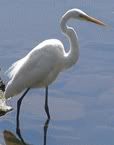
The Bird's Nest is a resource for primary school teachers about birds in the Wolli Creek Valley and surrounding areas. It features laminated A3 coloured posters with teachers notes on the reverse. The posters have accompanying worksheets for students. The resource also contains a Powerpoint presentation on urban birds and the birds of the Wolli Valley.
The Bird's Nest is not designed for use online. The following is a preview of the contents to help you plan your study of Wolli birds. Read through the table of contents below (much of which links to image previews) or scroll down to see the thumbnails at the end.
Resource kits are available via info@wollicreek.org.au
Contents
1. Curriculum notes - outlining activities that meet Dept Ed outcomes through studying a theme of Birds of the Wolli Valley
Where is Wolli?
2. Wolli walkers map - to help plan a class excursion
3. Two Valley Trail Map
Aerial photos
4. Wolli Valley: aerial photo (Poster A) + teachers notes
5. Historical map of the Wolli Valley (Poster B) + teachers notes
6. Pictorial map of the Wolli Valley (Poster C) + teachers notes
Posters and Activity sheets
7. Habitat poster (Poster D) + teachers notes
8. "Birds and their habitats" activity sheet
9. Threats poster (Poster E) + teachers notes
10. "Friend or foe?" activity sheet
11. Black and white birds poster (Poster F) + teachers notes
12. "What bird is that?" activity sheet
13. Black and white birds tally sheet
14. School birds tally sheet
15. Bird beaks poster (Poster G) + teachers notes
16. Beaks activity sheet
Creative Arts
17. Masks and puppets (Teachers notes)
18. Mask Making Instructions - Simple bird masks
19. Complex bird masks (A3 template sheet)
Bird and Words
20. Birds and Words activity sheet
21. Have you seen a Corella in Turrella?
References
22. Bird weblinks
23. Aboriginal bird stories
24. Birds and Aboriginal people
25. The urban fox - flyer
26. Backyard Birds of NSW - colour poster
27. Powerpoint presentations (inside back cover)
Acknowledgements
THE BIRD'S NEST IN MINIATURE
Below is a thumbnail view of the Bird's Nest. Click on each image to enlarge.
To borrow this resource, contact info@wollicreek.org.au
WOLLI WALKERS MAP
POSTER A - WOLLI VALLEY AND SURROUNDS - AERIAL PHOTO
POSTER B - HISTORICAL MAP OF WOLLI VALLEY VEGETATION
POSTER C - PICTORIAL MAP OF THE WOLLI VALLEY - HABITAT TYPES
POSTER D - BIRDS AND THEIR HABITAT
POSTER E - THREATS TO NATIVE BIRDS
POSTER F - BLACK AND WHITE BIRDS
POSTER G - BIRD BEAKS
ACTIVITY SHEETS
HABITAT ACTIVITY SHEET
"FRIEND OR FOE?" ACTIVITY SHEET
BLACK AND WHITE BIRDS ACTIVITY SHEET
BEAKS ACTIVITY SHEET
MASKS AND PUPPETS INFORMATION SHEET
MASKS ACTIVITY SHEET
BIRDS AND WORDS ACTIVITY SHEETS
ACKNOWLEDGEMENTS




























